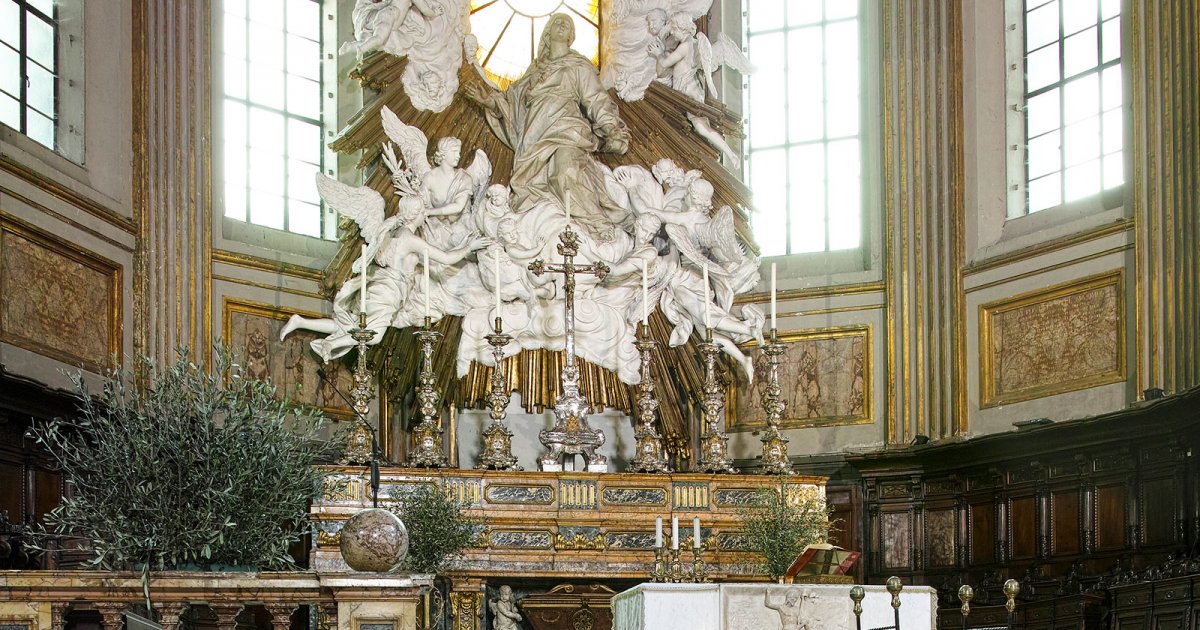CATHEDRAL, Interior
 Language: English / USA
Language: English / USA
Now enter the Cathedral and get a quick idea of its structure: it is a Latin cross with 3 naves and preserves its original 14th-century layout.
You immediately notice that the Cathedral of Naples is a rich, stratified monument that should be taken in little by little: it should be visited calmly and carefully to avoid missing any of its plethora of treasures from many different ages. The naves are an impressive 100 meters long. You can begin by admiring the sixteenth-century ceiling consisting of golden and inlaid paneling alternated with paintings by various artists; wherever you look you'll see an incredible amount of Baroque decorations. Frescoes, stuccoes, and sculptures envelop the Gothic structure and make it virtually unrecognizable. Begin to look at the paintings on the walls of the Apostles and Doctors of the Church, without neglecting the tondi of the lower band that depict the patron saints of Naples: they have all been painted by one of the greatest seventeenth-century Neapolitan painters, Luca Giordano.
Now turn your back to the main altar and look at the entrance wall: the tombs you see were rebuilt at the end of the 1500s in place of the original 14th-century ones that were destroyed. They belong to two illustrious characters of the city's history: Charles of Anjou and Charles Martel of Anjou, the King of Hungary.
Your walk through the Cathedral should start along the right nave. As you can see, the third chapel is a large space on its own: it is the Royal Chapel of the Treasure of Saint Januarius, a masterpiece of Baroque Neapolitan architecture. It is precisely here that with baited breath, every year the Neapolitans await the miracle of the liquefaction of their protector saint's blood. But the chapel is also prodigious for the value of its works, starting with the entrance gate; both the gate and the floors were designed by the great architect and sculptor Cosimo Fanzago from Bergamo, who was a genius with the Baroque style. He left an impressive number of works in Naples that includes churches, palaces, convents, spires, chapels, altars, and statues.
The city's coat of arms carved into the floor is clearly visible at the entrance to the Chapel of Saint Januarius. Since its origin, the chapel has always been the property of the city of Naples, and not of the Church.
FUN FACT: the majestic chapel gate has a special peculiarity: if you tap the brass bars with a metal stick, they each make a different musical note. It is practically a large xylophone, designed more to amaze you than to be played: a typical Baroque extravagance!



